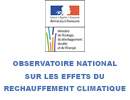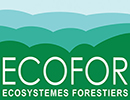Clean development mechanisms and national policies and measures
Clean development mechanisms and national policies and measures
The recourse to Clean Development Mechanisms (CDMs) for funding a certain number of ‘carbon sink’ projects in the forestry sector raises methodological evaluation problems linked to the restrictive ‘additionality’ and ‘leakage’ conditions mentioned in the Kyoto Protocol.
These strict eligibility criteria highlight all the issues related to the construction of specific ‘reference scenarios’ for the different geographical zones and types of project. The scope of the CDMs will depend on the orientation taken by the methodological developments. CDMs may, moreover, tend to concentrate funds transfers on to projects that maximize CO2 storage (industrial tree plantations).
This may be detrimental to projects with more fundamental objectives in the field of energy, aiming to avoid the long-term drift of emissions. In the forestry and agroforestry sectors, it may result in ‘multiple dividend’ projects being crowded out, generating conflicts between different environmental objectives (in particular with biodiversity conservation objectives). This situation motivates the hunt for project funding and selection mechanisms that would make it possible for developing countries to use CDMs to reach their own national sustainable development goals.
In the same line of action, the search for ways of linking up and combining incentive instruments for sustainable development (Global Environment Facility/ FFEM funds designed to cover ‘incremental costs’, environmental taxation, etc.) aims to conciliate various environment and development objectives.
| Coordinators |
Alain Karsenty, CIRAD – ECOPOL |
| Partnership |
CIFOR |
| Funding |
MEDD
|
| Budget |
MEDD
|




